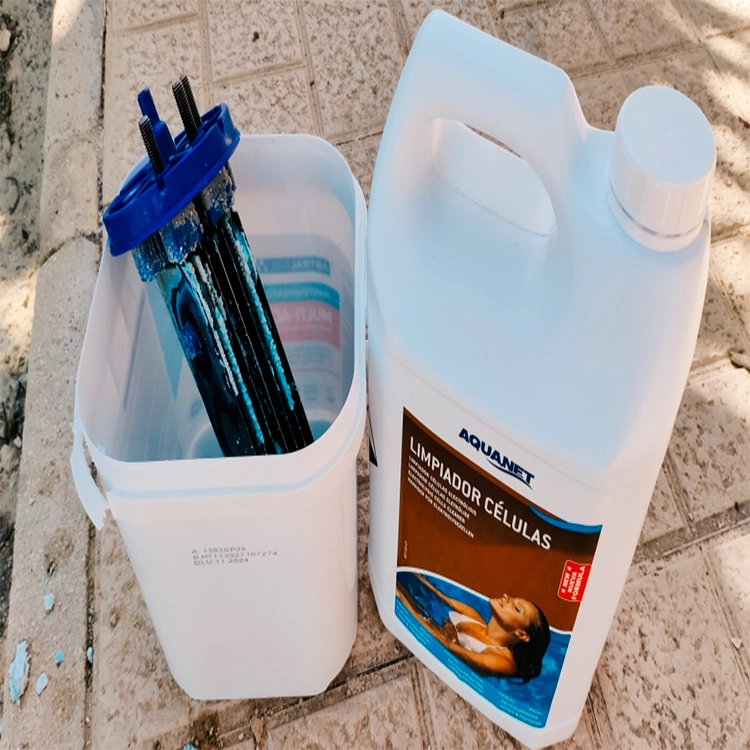
Do it yourself
How to clean the salt water chlorinator cell?
12/06/2022
A complete guide to cleaning your salt water chlorinator cell so that it will produce the same chlorine as the factory settings.
If you detect that your salt chlorinator has the "lack of salt" light on but you have checked that the salt level is correct, it is possible that the cell is failing to produce chlorine. This occurs because during the electrolysis process it produces lime scale that becomes embedded in the cell plates, causing it to lose efficiency in the production of chlorine. This is solved with a good maintenance or, what is the same, a cleaning of the cell.
Chlorinator cells are not cheap so a good maintenance could save you a whole season. Keep this in mind.
ImportantIf the cell is self-cleaning, it is not necessary to do this manual cleaning.
Chlorinator cells are not cheap so a good maintenance could save you a whole season. Keep this in mind.
ImportantIf the cell is self-cleaning, it is not necessary to do this manual cleaning.
- Switch off the electricity to stop the filtration equipment and the salt chlorinator system.
- Close all the valves on the filtration equipment (bottom, skimmers, impellers, sweepers, etc.). Put the filter selector valve in the closed position.
- Dismantle the electrolytic cell. To do this, you will have to unscrew the locking nut and remove the electrode pack.
- Depending on the make and model, you will have to remove the electrode from the electrolysis vessel and immerse it in a container containing water, or if it is not removable, add water to the vessel.
- If water alone is not enough, prepare a container with eight parts water and one part acid (the pH-reducing liquid). pH-reducing liquid o cell cleaners are the recommended products), and immerse the cell for three to four minutes. The acid will quickly attack the limescale, breaking it down.
- ImportantAcid cleaning should only be done in very specific cases, to prevent the plates from wearing out. As soon as they lose their protective bath, they will be damaged in a short time, and they are not cheap.
- ImportantThe use, for example, of hydrochloric acid or sulphuric acid without reducing it with water to clean the electrolysis plates damages them irreversibly. The surfaces of the plates are made of special metals (titanium, rubidium ....) and are corrosively attacked by these acids.
- When you are finished, rinse the cell with clean water. If after cleaning you see that there is still some residue, repeat the procedure but in a shorter time.
- Important: Never scrape or brush the surface of the titanium plates of the cell or use metallic elements, as this may damage the plates and render the cell unusable.
- When you have cleaned the cell, mount it back into the electrolysis vessel or assemble the vessel and put the locking nut and electrodes back in their original position.
- Open the valves of the filtration equipment to their usual position (filtered) and check that there are no water leaks in the electrolysis vessel.
- Reconnect the electric light to start up the filtration equipment. Check that the chlorinator is working properly.